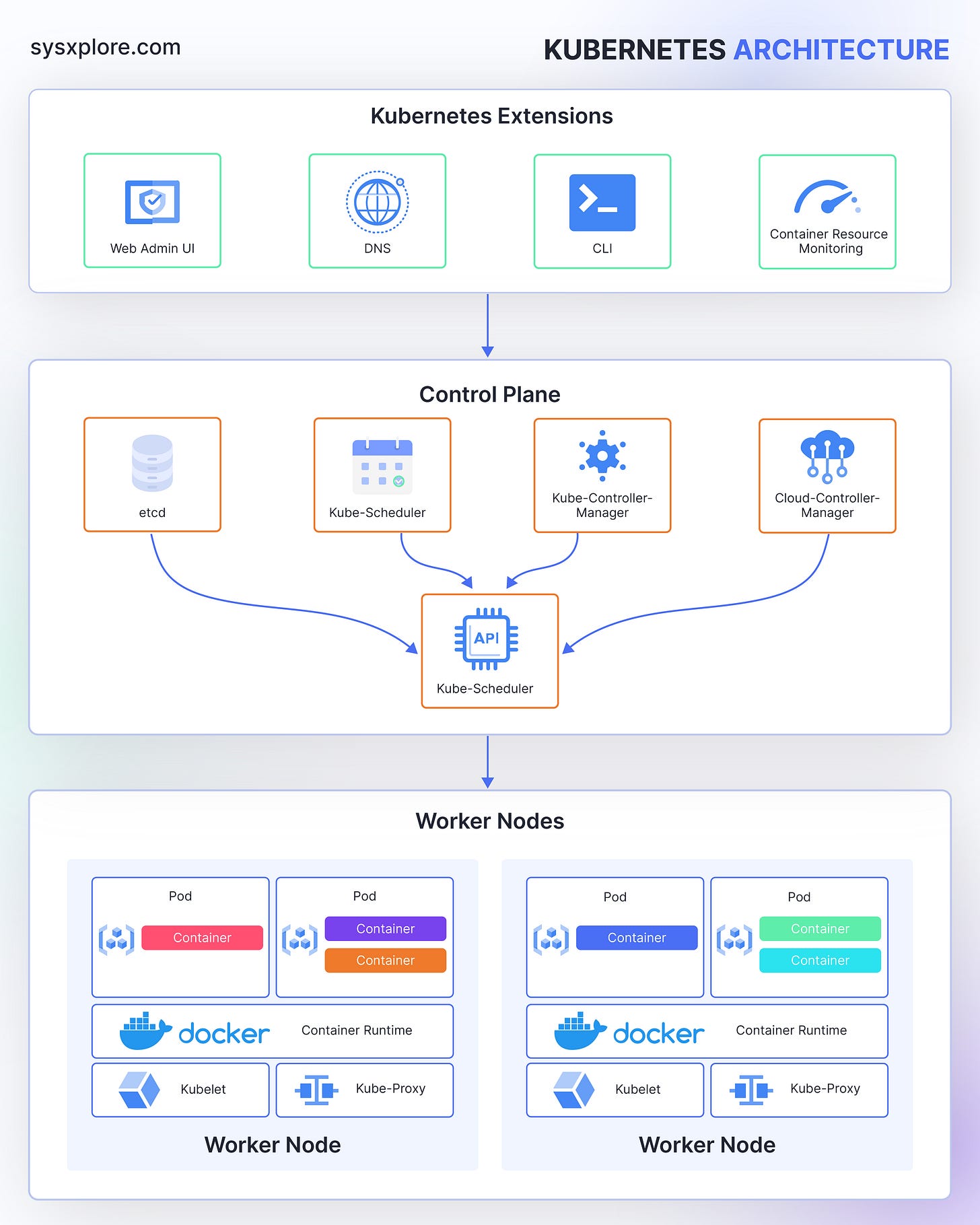Kubernetes Architecture and Components
Kubernetes is a container orchestration platform that automates application deployment, scaling, and management. It consists of several components that work together to provide its functionality.
Control Plane Components
kube-apiserver: The primary management component that acts as the frontend for the Kubernetes control plane. It exposes the Kubernetes API and handles internal communication between various components.
etcd: A distributed, consistent key-value store used to store cluster data like configuration, state, and metadata.
kube-scheduler: Schedules and assigns workloads (Pods) to available nodes based on resource requirements and constraints.
kube-controller-manager: Runs various controllers responsible for managing the state of different Kubernetes objects like replication controllers, node controllers, etc.
cloud-controller-manager: An optional component that integrates cloud provider services like load balancers, persistent storage, etc.
Node Components
kubelet: The primary node agent that runs on each node and ensures containers are running as expected. It communicates with the control plane components.
kube-proxy: A network proxy that runs on each node and facilitates communication between services and pods across nodes.
Container Runtime: The software responsible for running containers, e.g., Docker, containerd, CRI-O.
Addons
Kubernetes also includes some optional addon resources that provide additional functionality:
DNS: Cluster DNS is a DNS server that serves DNS records for Kubernetes services.
Web UI (Dashboard): A general-purpose web UI for monitoring and managing Kubernetes clusters.
Container Resource Monitoring: Records resource usage data for containers and manages their lifecycle.
Cluster-level Logging: A logging solution that helps users get logging data for troubleshooting and maintenance.
The following infographic provides a visual overview of the Kubernetes architecture and how its components fit together:
These components work together to provide a robust, scalable, and highly available container orchestration platform. Understanding their roles is crucial for effectively managing and operating Kubernetes clusters.
Thank you so much for reading this. If you find it interesting, do share with your everyone who might also find it useful. For an in-depth guide on Kubernetes architecture check out my blog.




